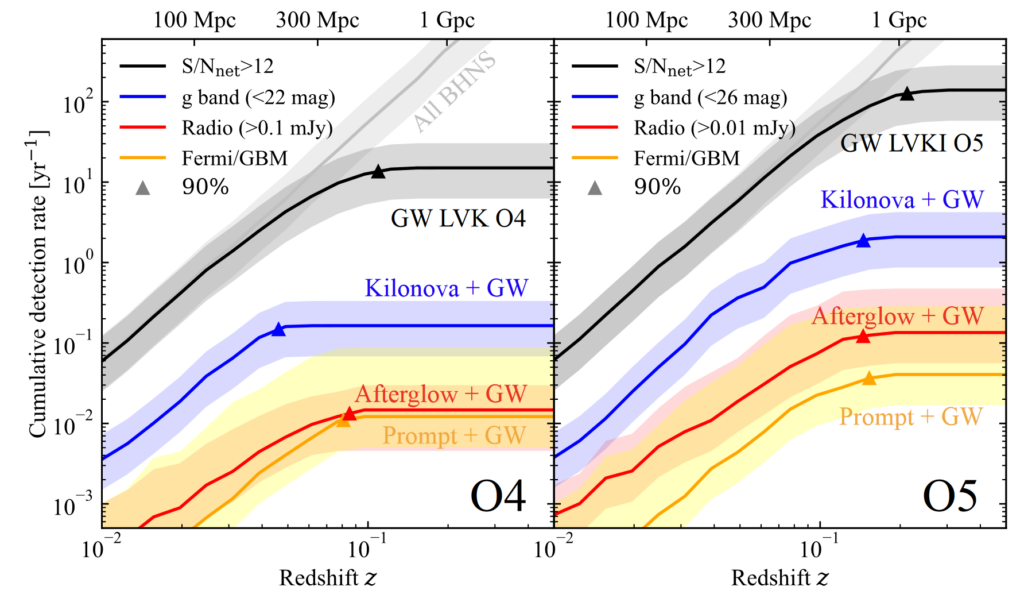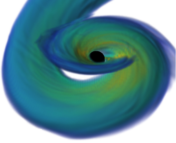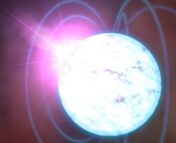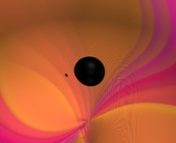Paper Title: Multi-messenger prospects for black hole – neutron star mergers in the O4 and O5 runs
Authors: Alberto Colombo, Raphaël Duqué, Om Sharan Salafia, Floor S. Broekgaarden, Francesco Iacovelli, Michele Mancarella, Igor Andreoni, Francesco Gabrielli, Fabio Ragosta, Giancarlo Ghirlanda, Tassos Fragos, Andrew J. Levan, Silvia Piranomonte, Andrea Melandri, Bruno Giacomazzo, and Monica Colpi
First author institution: Università degli Studi di Milano-Bicocca, INFN – sezione di Milano-Bicocca, and INAF – Osservatorio Astronomico di Brera, Milano, Italy
Status: Submitted to Astronomy & Astrophysics (open access on arXiv)
Gravitational wave astronomy is a rapidly growing field. From the hum of the gravitational wave background recently detected to mergers of neutron stars and black holes, advancements in the last two decades have opened the door for many fascinating questions to be answered. Gravitational waves are one of the “messengers” of multi-messenger astronomy, which gives us new ways of understanding objects in our universe.
One exciting multi-messenger detection including gravitational waves was the case of GW170817 – a merger of a pair of neutron stars on August 17, 2017. The event was first seen in gravitational waves, and then 1.7 seconds later, a short Gamma-Ray Burst (GRB) was reported, followed by afterglow from hours to even years after the merger.
This remarkable event was detected by the LIGO and Virgo ground-based gravitational wave detectors. These detectors, with the addition of KAGRA (collectively, LIGO-Virgo-KAGRA or LVK) are currently observing in their 4th observing run (called O4). (For more information about them and the gravitational waves they observe, see this Guide).
But, what if one of the merging objects is not a neutron star? How does that change what astronomers see? Today’s authors look at the case of a neutron star and a black hole (NSBH) merging, and model the multi-messenger detections we could see in this case.
Waves of light and gravity
The authors start by developing a realistic population of neutron star/black hole binary systems. They consider the spin of the black hole, the equation of state of the neutron star, and the masses of the two objects. They also checked that the population they derive is consistent with the 4 NSBH mergers observed by LVK in their last observing run (called O3).
Now that the authors have a set of neutron star/black hole binaries about ready to merge, they want to see how many of them would be visible with the LVK observatories in the current observing run (O4) and in the next observing run (O5). For this they consider LVK detectors for gravitational waves, but also the signatures in light we expect to see.
When a neutron star and a black hole merge, we might expect to see a kilonova, which occurs when material is accelerated and flung out as the two objects merge. If they also form a jet, we might see a short gamma-ray burst (SGRB) from the surrounding material being accelerated as the objects get closer together. These SGRBs often have two components – an initial bright part, called “prompt” that is usually in gamma-rays, and an “afterglow”, which is longer timescale emission in other wavelengths such as radio, optical, or X-rays.
Messages from a neutron star and a black hole
For the population they’ve generated, the authors consider which components of the emission might be visible on Earth. This can be seen below in Figure 1.

In O4, they predict around 15 NSBH mergers per year, but only 1 merger every 10 years with a kilonova detected. For the detection of the GRB component of these mergers (prompt or afterglow), they see a rate of about 10 times less (1 merger per 100 years).
In the next observing run, O5, the improved sensitivity of the gravitational wave detectors and developments in optical and radio instruments improves the ability to see these events. In gravitational waves, they predict around 140 NSBH mergers per year and 2 per year with a detectable kilonova.
These estimates also depend on the parameters assumed for the black hole and the neutron star, which can lead to some differences (see Figure 2). Depending on the equation of state for the neutron star, and if the black hole has spin, we could expect to see more mergers (higher rate). This is especially visible in the case of the kilonova+GW for O4, where we may see up to 1 merger per year with a kilonova, with certain model parameters.

Although we may see kilonovae and short GRBs from the merger of neutron star/black hole mergers, these may look different than the ones observed alongside GW 170817, which was a binary neutron star (BNS) merger.
They take a look at what the kilonova from NSBH mergers might look like, and compare it to the observed AT2017gfo, the kilonova counterpart to GW 170817 (shown in Figure 3, for optical light). The kilonova for the NSBH mergers is generally dimmer than those for BNS, and dims more quickly.

Looking forward: prospects for seeing these mergers
So, can we see these mergers in multiple messengers?
In O4, the electromagnetic emission is quite difficult to see. For the kilonova, we expect a rate of only about 0.1 per year, so it’s unlikely we could observe these. The prospects for seeing the short GRB are 10 times lower, and so are unlikely to be observed.
But, in O5, with some planned improvements to the gravitational wave detectors, and planned upgrades to optical and radio instruments, the prospects improve. It might be possible to see a kilonova from one of these mergers, which would give us new information about the neutron star and black hole themselves, as well as the formation of the systeBut, in O5, with some planned improvements to the gravitational wave detectors to detect further away mergers and fainter signals, and planned upgrades to optical and radio instruments, the prospects improve. It might be possible to see a kilonova from one of these mergers, which would give us new information about the neutron star and black hole themselves, as well as the formation of the binary system.
Astrobite edited by: Keighley Rockcliffe
Featured image credit: NOIRLab/NSF/AURA/J. da Silva/Spaceengine, CC BY 4.0, via Wikimedia Commons





nice!